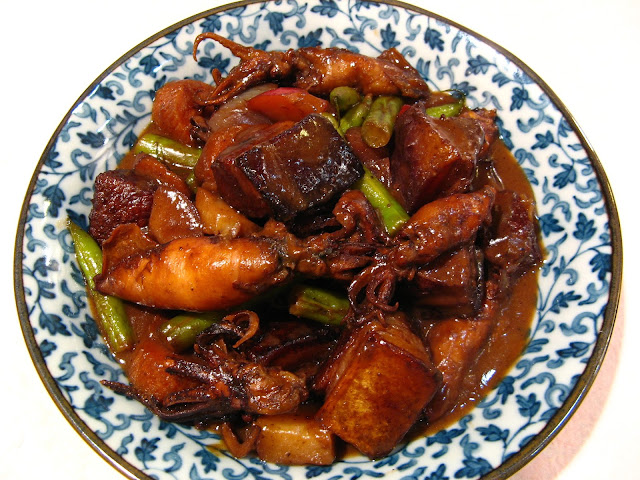The combination of pork belly and squid in a Japanese curry
sauce is surprisingly tasty. S&B brand Japanese curry mix is used and is a
really easy way to make a curry sauce. The mix comes already prepared in cubes,
and one-half a package or four cubes are used to make the sauce by just adding
water. Since pork belly is used, the cooking time is longer than the usual
Japanese curry dish. If pork belly is not available, boneless country style
pork ribs can be substituted.
My local Asian market occasionally has cooked squid
available. I use it whenever I can, but frozen or fresh squid can be used instead.
The squid gets added at the end of cooking, so if it’s not already cooked, it
will be when the dish is ready. The quill has to be removed from the squid,
since it’s inedible, and the only tricky part to removing the quill is keeping
the already cooked squid body and tentacles intact when you do this – sometimes
it’s impossible.
Enjoy!






